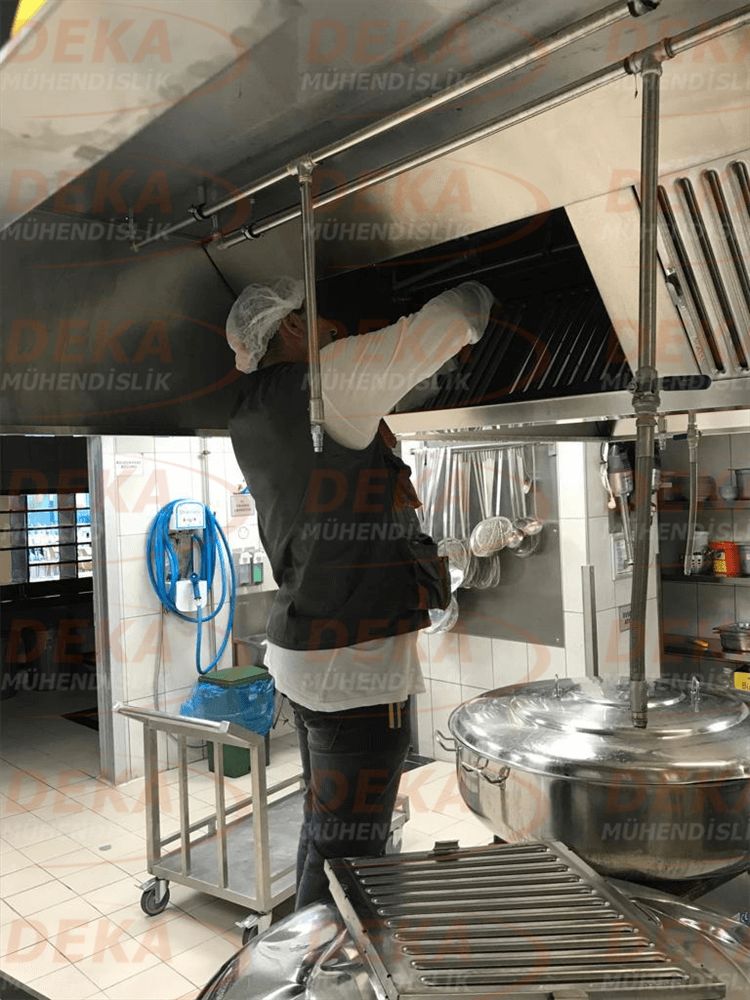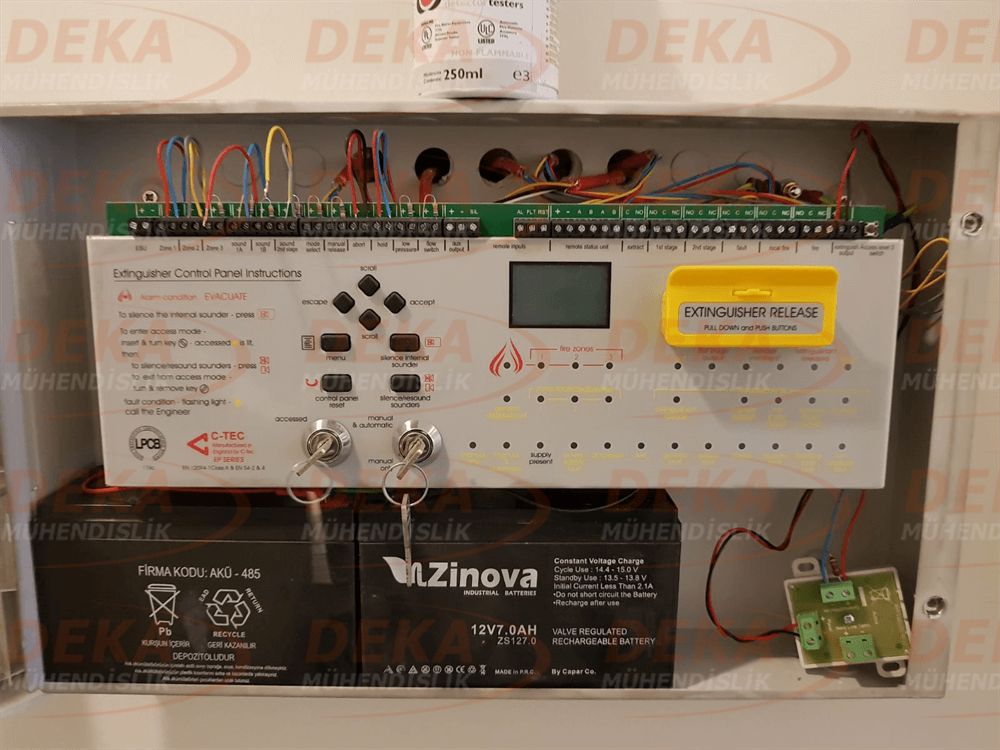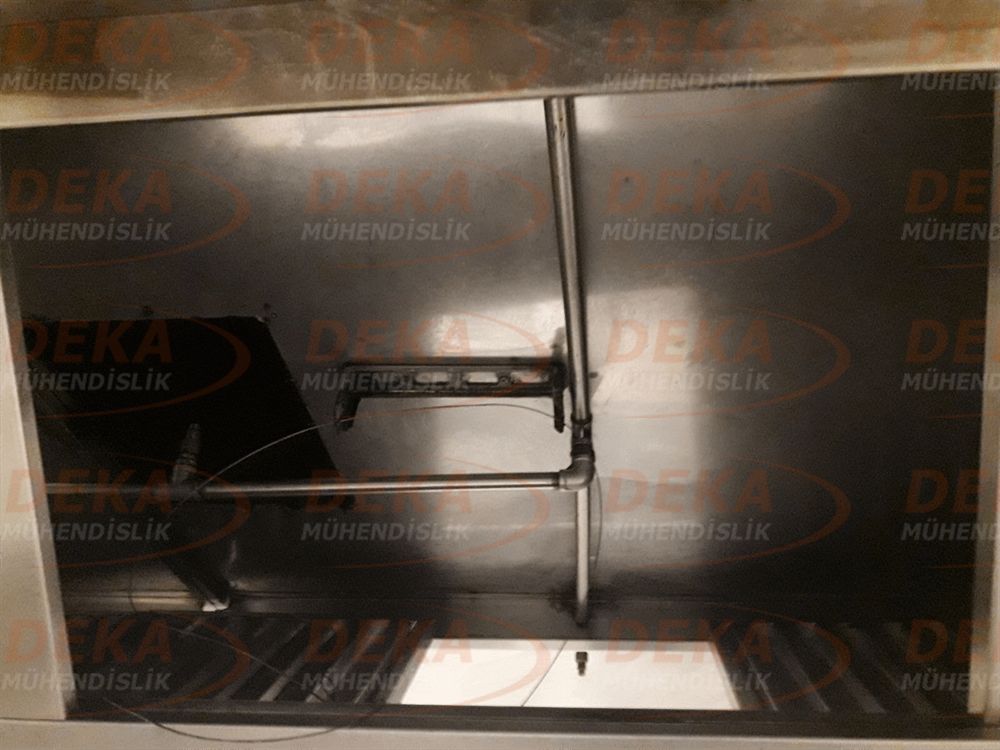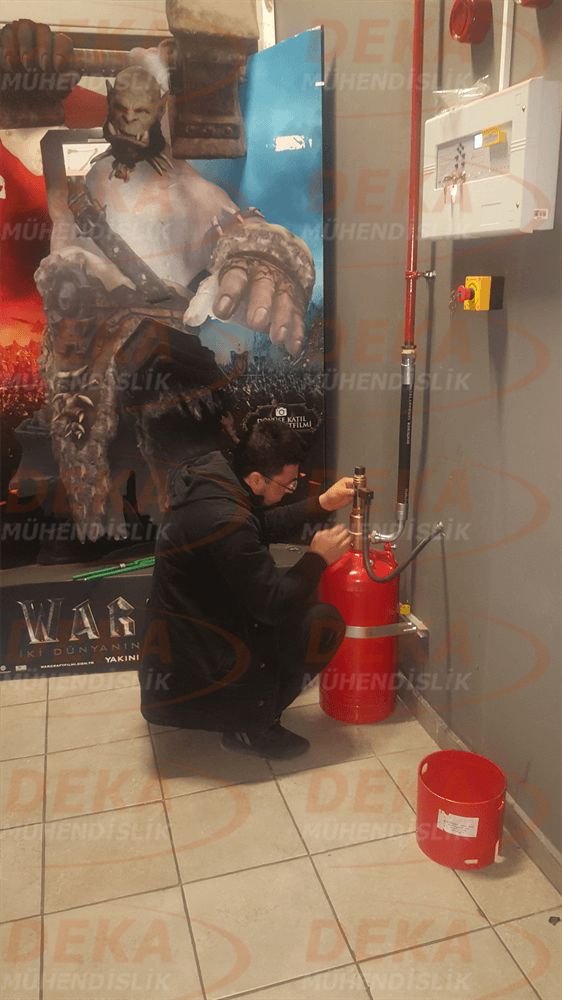As Deka Engineering Company, one of our applications is to perform periodic maintenance to provide in order to increase the usability and security of fire extinguishing and detection systems applications, we provide and inform the company officials. It is necessary to be prepared for a possible fire; to design the right, the most appropriate and economical fire extinguishing and detection systems, to make the applications and to make maintenance and periodic checks of the applications.
The provisions on periodic maintenance in the regulation on fire protection of buildings are specified in Article 84 and Article 100.
ARTICLE 84- (1) Emergency lighting, guidance and fire detection and warning systems stipulated in this Regulation; Under the responsibility of the building owner and the manager or the building authority to whom they transfer their responsibilities in writing, they are subjected to periodic control, testing and maintenance required by the system specified in the relevant standards. (2) In the acceptance procedures, the issues specified in the first paragraph are complied with.
ARTICLE 100- (1) The fire extinguishing systems foreseen in this Regulation must be subject to periodic control, testing and maintenance required by the system specified in the relevant standards, under the responsibility of the building owner, the manager, or the building authority for whom they delegate their responsibilities in writing.
International standards regarding maintenance: NFPA 12, NFPA 2001, EN 15 004, NFPA 70 and NFPA 72.
In the frequency of periodic maintenance, the periods determined by the manufacturers are taken into account. Mechanical equipment’s tightness and applicability check should be done at least twice a year with six-month periods. Electronic equipment control should be carried out quarterly, four times in a year.
The controls of the gas fire extinguishing and detection systems in three month periods are as follows:
Mechanical Maintenance
- Determination of the location of the cylinder, their dyes, labels and whether they are physically deformed
- Testing whether the solenoid and pneumatic valves on the cylinders are operable
- Suitability of the locations of piping and nozzles
- Physical control of nozzles and pipining to prevent gas escaping and blockages
- Visual control of the volume integrity and tightness of the room
- The type, quantity and pressure of the gas in the extinguisher cylinders are recorded and compared to the previous maintenance
- If there is a pilot cylinder, the type, quantity and pressure of the pressurizer gas are recorded and compared to the previous maintenance.
- Hydrostatic testing and re-filling of the extinguisher cylinders with manufacturing dates exceeding ten years
- Hydrostatic testing and re-filling work requirement check for extinguishing cylinders whose gas filling dates exceed ten years
- Hydrostatic testing of mechanical elements on extinguishers and under pressure in pipings
- Performing the leak test of the mechanical elements on the extinguishers and under pressure in the installation with light foam
- Checking the physical suitability of check valves, collector and fixing elements in the system
- Control of cylinder extinguisher level and amount with ultrasonic devices
Electronic Maintenance
- The suitability of the locations of the control panel, to check whether it is deformed
- Testing the leds on the panel
- Control of key operations on the panel
- Checking the charge status of the batteries inside the panel
- Checking the extinguishing delay time on the panel for compliance with the standards
- Suitability of the location and type of detectors
- Spray cleaning of detectors
- Detection if detectors are subjected to physical deformation
- Testing of detectors whether they fulfill detection function
- Determining and reporting the number and type of detectors that cannot perform their functions
- Measurement of current mounting characteristics on panel, solenoid valve, button and audible lights warning at the moment when smoke is given to detectors
- Control of the position and physical condition of the buttons and the audible warning elements
- Checking the appropriateness of intervention in terms of transportation and follow-up
- By removing the solenoid valve from the pilot cylinder; check whether the detectors are working by giving smoke, by providing fire conditions
- Control of siren and flasher sirens by giving smoke to detectors
- Control of the manual start and stop of the system by operating the buttons
- Determination and physical control of whether cable lines are deformed
- In case of malfunctions that cannot be repaired, the company will be notified with the minutes of the regions that will not operate.
User companies should assign at least one staff to accompany and testify to our work during the testing process and throughout the test period. Company authorized personnel should participate in the training provided by our personnel after maintenance. They should fill the maintenance reports with our staff and approve the maintenance forms. If there is an abnormality in the system, they should inform the authorities as soon as possible and request service.
Some of the applications we provide maintenance services:
- FM 200 (HFC 227 ea) extinguishing systems
- Novec 1230 (FK-5-1-12) extinguishing systems
- IG 01 argon extinguishing systems
- IG 50 nitro argon extinguishing systems
- IG 451 inergen extinguishing systems
- Carbon dioxide (CO2) extinguishing systems
- FM 200 (HFC 227 ea) extinguishing systems inside the panel
- Novec 1230 (FK-5-1-12) extinguishing systems inside the panel
- Dry chemical (KKT) extinguishing systems inside the panel
- In-vehicle dry chemical (KKT) extinguishing systems
- Hood fire extinguishing systems
- Fire pumps
- Sprinkler water extinguishing system equipment
- Indoor and outdoor fire cabinet
- Fire hydrant system
- Foam extinguishing system equipment
- Dry chemical powder extinguishing systems
- Watermist – water fog system
- Fire detection and warning system
- Emergency lighting and directional luminaires

























